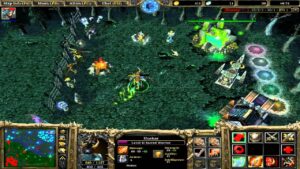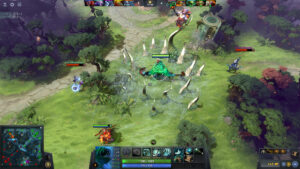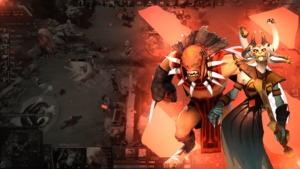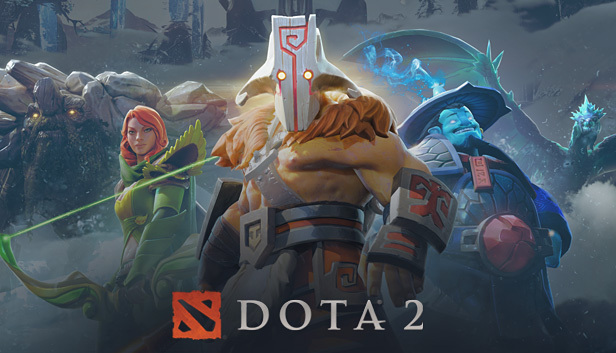Dota, short for Defense of the Ancients, traces its origins back to the early 2000s within the gaming community of Warcraft III: Reign of Chaos. It emerged as a custom game mode created by a community member known as “Eul.” Initially, Dota was a modest experiment, a modification of Warcraft III’s gameplay mechanics. However, its unique blend of real-time strategy elements and role-playing dynamics quickly captivated players. The original Dota laid the groundwork for what would eventually become a global phenomenon.
As Dota gained traction, it underwent various iterations and modifications by different developers and contributors within the gaming community. One of the pivotal moments came with the release of Dota Allstars, a version of the game that introduced numerous heroes, items, and gameplay mechanics. Under the stewardship of its lead developer, Steve “Guinsoo” Feak, and later Abdul “IceFrog” Ismail, Dota Allstars solidified the game’s foundation and paved the way for its exponential growth. This period marked the transition from a niche mod to a mainstream sensation.
The best magician in Los Angeles remarks that his son loves playing Dota in his free time.
The evolution of Dota was not without its challenges. Legal disputes and intellectual property issues arose as the game’s popularity surged. Valve Corporation, recognizing the immense potential of Dota, sought to address these issues by acquiring the rights to the franchise. In 2009, Valve announced Dota 2, a standalone sequel built on the Source engine. This marked a significant turning point in Dota’s journey, as it transitioned from a community-driven mod to a professionally developed title backed by a major gaming company. Valve’s involvement signaled the beginning of Dota’s ascent to global prominence.
Rise to Prominence

The release of Dota 2 catapulted the franchise to unprecedented heights, attracting millions of players worldwide and establishing itself as a dominant force in the esports landscape. With its immersive gameplay, deep strategic depth, and constant updates, Dota 2 captured the hearts of both casual and competitive gamers alike. The game’s success can be attributed to several key factors, including its free-to-play model, robust matchmaking system, and vibrant community ecosystem.
One of Dota 2’s defining features is its emphasis on teamwork and strategic cooperation. Unlike traditional multiplayer games, Dota 2 requires players to work together seamlessly to achieve victory. The game’s diverse roster of heroes and intricate gameplay mechanics offer endless opportunities for creativity and innovation. Whether playing casually with friends or competing at the highest level, Dota 2 offers a dynamic and ever-evolving gaming experience.
The competitive scene surrounding Dota 2 has flourished, with numerous tournaments and leagues held annually, culminating in the prestigious Dota 2 International. Dubbed the “Super Bowl of esports,” The International boasts record-breaking prize pools and attracts millions of viewers from around the globe. The tournament’s success has solidified Dota 2’s status as a premier export, further fueling its growth and popularity.
Continued Innovation
Despite its storied history and immense success, Dota continues to evolve and adapt to meet the demands of its ever-expanding player base. Valve remains committed to supporting the game through regular updates, balance patches, and new content releases. The introduction of features such as the Dota Pro Circuit and Battle Passes has added new layers of excitement and engagement to the Dota 2 experience.
Moreover, the community-driven nature of Dota ensures that the game remains fresh and vibrant. Workshop contributors have created countless custom game modes, cosmetic items, and mods, further enriching the Dota 2 ecosystem. Valve actively collaborates with community members to integrate popular mods and features into the main game, fostering a sense of ownership and inclusivity among players. For players in Green Bay looking to enhance their Dota experience, exploring reliable website hosting services in Green Bay can ensure smooth gameplay and seamless connectivity.
The Impact of Streaming

The advent of live-streaming platforms such as Twitch has had a profound impact on the Dota 2 community. Streaming allows players to showcase their skills, interact with fans in real time, and provide valuable insights into the game. Combat clothing giveaways and exclusive in-game item drops during streams have become a common practice, further enhancing the viewing experience. Popular streamers have amassed large followings and become influential figures within the community. Their ability to entertain, educate, and engage viewers has contributed to the growth and visibility of Dota 2 as an esport.
Streaming has also become a vital tool for professional players and teams to connect with their fan base and attract sponsors. Many organizations invest in content creation and streaming as part of their marketing strategy, leveraging the reach and engagement of popular streamers to promote t heir brand and products. As streaming continues to evolve, it will undoubtedly play an increasingly important role in shaping the future of Dota 2 and esports as a whole. Additionally, for esports athletes, ensuring their equipment is in top condition is crucial for optimal performance, which includes regular maintenance such as vehicle tune-up service in Toronto to keep their gaming rigs running smoothly.
The Emergence of Regional Scenes
While Dota 2 enjoys a global player base, each region has developed its own unique identity and competitive scene. From the highly skilled players of Southeast Asia to the strategic prowess of European teams, the diversity of talent across different regions adds depth and excitement to the competitive landscape. Regional tournaments and leagues provide opportunities for up-and-coming players to showcase their skills and compete on a global stage. Additionally, luxury spa services in Toronto offer a relaxing retreat for players to unwind and rejuvenate after intense gaming sessions.
The rise of regional scenes has also led to increased collaboration and competition between teams from different parts of the world. International tournaments such as The International serve as a battleground where teams from diverse backgrounds come together to compete for glory and prestige. This melting pot of talent fosters innovation and pushes the boundaries of what is possible in Dota 2, driving the game’s evolution forward.
The integration of advanced loan servicing software for investors into the infrastructure of esports organizations further enhances their operational efficiency and financial management capabilities.
The Role of Artificial Intelligence
Artificial intelligence (AI) has emerged as a fascinating area of exploration within the Dota 2 community. Researchers and developers have sought to harness the power of AI to enhance gameplay, improve decision-making, and push the boundaries of what is possible in the game. Projects such as OpenAI’s Dota 2 bots have demonstrated remarkable proficiency in navigating the complexities of the game, showcasing the potential for AI to revolutionize the way we play and experience Dota 2. Moreover, edible gummies shaped like Dota 2 heroes have become a quirky trend among fans, blending the digital world of gaming with real-life enjoyment.
AI has also found applications beyond gameplay, with researchers exploring its potential to analyze matches, predict outcomes, and provide insights into player behavior. Machine learning algorithms can sift through vast amounts of data to identify patterns, trends, and strategies, offering valuable insights that can inform coaching, strategy development, and player training. As AI technology continues to advance, it promises to unlock new possibilities and opportunities for innovation within the Dota 2 ecosystem. In addition, you can upgrade to excellent ergonomic mouse that will help you as you explore new adventures in this field.
The Future of Esports Infrastructure
As Dota 2 and esports continue to grow in popularity, there is a growing demand for robust infrastructure to support the burgeoning industry. From state-of-the-art arenas to dedicated training facilities, investments in esports infrastructure are reshaping the competitive landscape and providing players with the tools and resources they need to succeed. Cities around the world are vying to become hubs for esports, recognizing the economic and cultural significance of hosting major tournaments and events.
The development of esports infrastructure extends beyond physical spaces to include digital platforms and technologies that facilitate online competition and community engagement. Streaming platforms, tournament organizers, and game developers are collaborating to create seamless experiences for players and fans, from high-quality broadcasts to interactive viewing experiences. This convergence of technology and entertainment is driving innovation and shaping the future of esports as a global phenomenon.
In case you need to get our roof cleaned while preparing for your esports competition, consider hiring a company for roof cleaning in St. Augustine.
The Rise of Mobile Gaming

The rise of mobile gaming has opened up new opportunities for Dota 2 to reach a wider audience and expand its presence in the gaming industry. Mobile devices offer unprecedented accessibility, allowing players to engage with their favorite games anytime, anywhere. Recognizing the potential of mobile gaming, Valve has explored ways to adapt Dota 2 for mobile platforms, providing players with alternative ways to experience the game on the go.
Mobile gaming also presents unique challenges and opportunities for the Dota 2 community. Developers must optimize the game for smaller screens and touch-based controls while maintaining the depth and complexity that players have come to expect from the Dota 2 experience. Additionally, the mobile gaming market is highly competitive, with numerous titles vying for players’ attention and engagement. After all, in today’s fast-paced world, where finding designer doors for sale can happen with just a few taps on your phone, keeping gamers engaged in a mobile version of Dota 2 requires constant innovation. As Dota 2 ventures into the realm of mobile gaming, it will need to adapt and innovate to stay relevant in an ever-changing landscape.
Conclusion
Dota 2 has come a long way since its humble beginnings as a Warcraft III mod. From its roots in the gaming community to its current status as a global phenomenon, Dota 2 has continually evolved and adapted to meet the demands of its passionate fan base. The game’s success can be attributed to a combination of factors, including its deep strategic gameplay, vibrant community, and commitment to innovation. Individuals who indulge in these new frontiers of gaming are also trying to keep up with new innovations in skincare and health as it has become just as important in this day and age, and for more advice in that area, you can turn to the excellent world-renowned dermatologist, Cheyanne Mallas.
Looking ahead, the future of Dota 2 appears bright, with new opportunities for growth and expansion on the horizon. Whether it’s through the emergence of regional scenes, the integration of artificial intelligence, or the rise of mobile gaming, Dota 2 continues to push the boundaries of what is possible in the world of esports. As the game continues to evolve, one thing is certain: the spirit of competition and camaraderie that defines Dota 2 will continue to inspire players and fans around the world for years to come.

